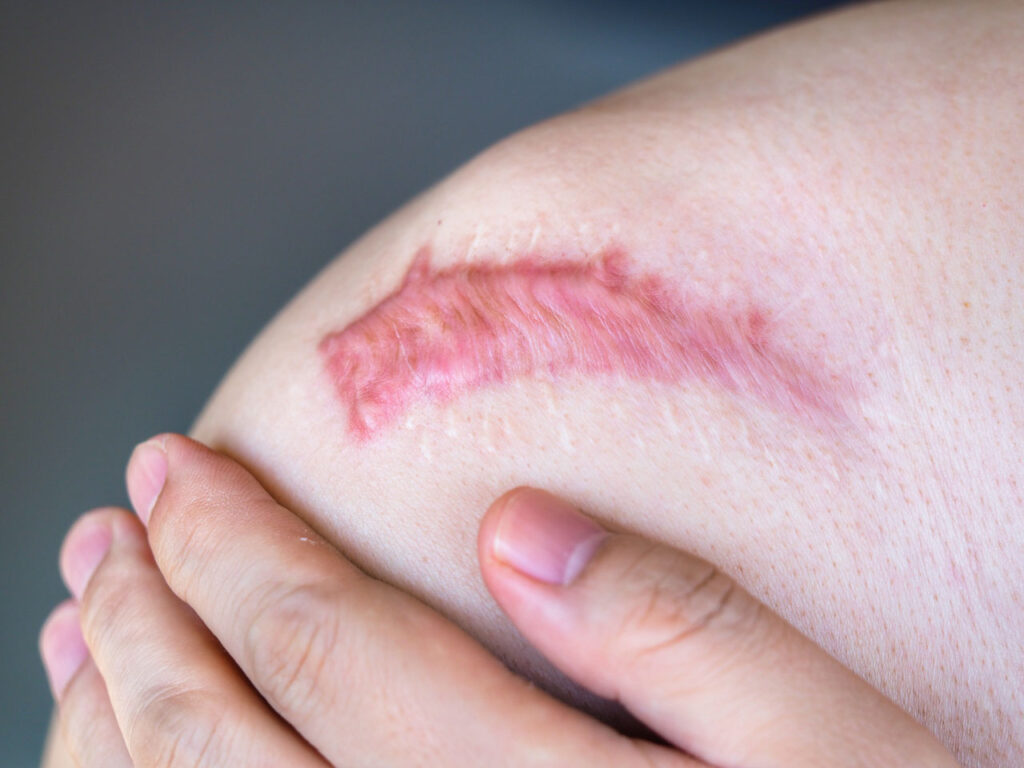
Keloid scars can be a result of the body’s excessive response to skin injury. This overresponse can lead to an overproduction of collagen the deeper layer of the skin (the dermis). Collagen is a crucial protein that helps connect tissues during the wound healing process, and in many situations the production of collagen is beneficial. However, in other cases, too much collagen can result in abnormal scarring known as keloids.
While the exact reason behind this excessive response is not fully understood, keloid scars are generally considered non-harmful but can be bothersome for some individuals from a cosmetic standpoint. They may lead to low self-esteem or a negative body image due to their appearance. However, there is good news—you don’t have to endure unsightly keloid scars permanently.
If you are dealing with keloid scars, it is highly recommended that you schedule an appointment with Board Certified Dermatologist Dr. Solomon Brinkman of the Houston Laser Skin Center in Northwest Harris County.
Characteristics of keloid scars
Keloid scars are sometimes confused with hypertrophic scars; however, they are completely different.
Hypertrophic scars are red and thick, typically appearing in areas of the skin with high tension on a wound. They are commonly seen in burn injuries and can cause discomfort and itchiness. Nevertheless, they usually remain within the boundaries of the original wound.
Keloid scars, on the other hand, range in color from pink to purple and have a smooth, firm texture that covers the injured area. Moreover, keloids have a tendency to extend well beyond the original borders of the injury. They can grow disproportionately large compared to the initial wound site.
Keloids are often found on body parts like the chest, shoulders, and earlobes, but they can occur in various areas. Some individuals appear to be genetically predisposed to developing keloid scars, which means they have an increased likelihood of forming keloids in response to skin trauma.
Treatment will be based upon your specific situation, including your medical history and prevalence of scarring. Scarring may respond different to various therapies. Board Certified Dermatologist Dr. Solomon Brickman has helped numerous Houstonians regain confidence and comfort with their skin after successful treatment and removal of keloid scars.
What are my treatment options for keloid scars?
There are several treatment options Dr. Solomon Brickman may recommend, including:
- Corticosteroid Injections: Injecting corticosteroids into the keloid can help reduce inflammation and flatten the scar.
- Cryotherapy: Freezing the keloid with liquid nitrogen can be effective in reducing its size and appearance.
- Laser Therapy: Certain laser treatments can help improve the texture and color of keloid scars.
Request an appointment with Dr. Brickman today!
Keloid scars is not something you have to deal with forever. They can be treated and removed. Dr. Brickman will assess your condition and recommend the most suitable treatment option(s) for your needs. Remember, keloid scars may respond differently to various treatments, and it may take time to achieve significant improvements.
Request an appointment with Dr. Brickman for more information.
